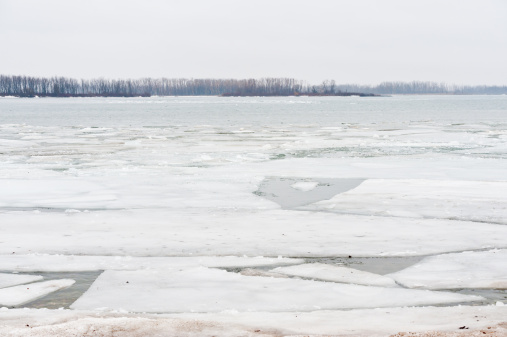TORONTO – The rescue of a woman and two children on the waters of Frenchmen’s Bay in Pickering on Sunday has safety officials sounding the alarm about venturing out on the ice in cold temperatures.

Several ice fisherman came to their rescue after the vehicle they were in broke through the ice and plunged into the icy water off Lake Ontario.
Durham police say this is the second time a car has fell through the ice at Frenchmen’s Bay this year.
It is reported that the owner of the vehicle will also have to pay for the car removal themselves.
The Canadian Red Cross say treacherous ice conditions are a result of a number of factors including thickness, type of water, location and the time of the year.
The color of ice may be an indication of its strength with clear blue ice as the strongest.
Meanwhile, white opaque or snow ice is half as strong as blue ice. Opaque ice is formed by wet snow freezing on the ice.
Finally, grey ice is unsafe as grayness indicates the presence of water.
Environmental factors such as water depth, chemicals including salt, changing air temperature and shock waves from vehicles traveling on the ice also play a role in ice thickness.
The Canadian Red Cross has these tips for people who are stranded on thin ice and are in need of help:
When You Are Alone On Ice
- Call for help.
- Resist the immediate urge to climb back out where you fell in. The ice is weak in this area.
- Use the air trapped in your clothing to get into a floating position on your stomach.
- Reach forward onto the broken ice without pushing down. Kick your legs to push your torso on the ice.
- When you are back on the ice, crawl on your stomach or roll away from the open area with your arms and legs spread out as far as possible to evenly distribute your body weight. Do not stand up! Look for shore and make sure you are going in the right direction.
When You Are With Others On Ice
- Rescuing another person from ice can be dangerous. The safest way to perform a rescue is from shore.
- Call for help. Consider whether you can quickly get help from trained professionals (police, fire fighters or ambulance) or bystanders.
- Check if you can reach the person using a long pole or branch from shore – if so, lie down and extend the pole to the person.
- If you go onto ice, wear a PFD and carry a long pole or branch to test the ice in front of you. Bring something to reach or throw to the person (e.g. pole, weighted rope, line or tree branch).
- When near the break, lie down to distribute your weight and slowly crawl toward the hole.
- Remaining low, extend or throw your emergency rescue device (pole, rope, line or branch) to the person.
- Have the person kick while you pull them out.
- Move the person to a safe position on shore or where you are sure the ice is thick. Signal for help.
- Ontario NDP sets ultimatum for legislature keffiyeh ban, threatening to defy rules
- Muslim human rights activist in need of kidney finds help from Jewish community
- S&P/TSX composite rises, Nasdaq leads Wall St. rally after tech earnings
- Toronto officer charged with perjury, attempt to obstruct justice: police




Comments